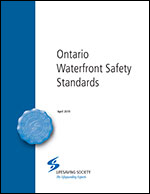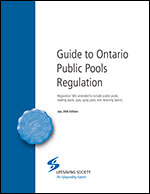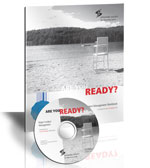Proven strategies for solving staffing shortages
Over the past several years the Society has worked with affiliates to find ways to increase aquatic staffing levels – including hosting a symposium on staffing shortages and developing supplementary reports with best practices and suggestions. Read the reports:
Aquatic Staffing Shortage Symposium Report 2018
Aquatic Staffing Shortage Addendum Report 2024
:::
We want to learn how you, our affiliates, have successfully addressed staffing challenges and understand any ongoing challenges you may have. Email us with your stories and questions to help us further develop and improve resources that everyone in the aquatic community can benefit from.
Webinars
Nothing scheduled at the moment, but we’re already working on what's next. Check back soon for updates!
View our library of past webinars available to watch.
Major Incident Management
About Critical Incident Stress - July 2017
Guidelines for Supervisors following a Critical Incident - July 2017
Major Incident Management Checklists - July 2017
:::
Aquatic Critical Incident Plan Template
The Lifesaving Society created this Microsoft Word template for developing a Critical Incident Plan for aquatic facilities. In chart form, the template guides facility operators and employees to prepare for and manage critical incidents.
The template establishes a structured and systematic process for responding to a critical situation to enhance your team’s response and to reduce the possibility that important steps will be overlooked. The template will also help when explaining processes and procedures to staff.
 Ontario Waterfront Safety Standards
Ontario Waterfront Safety Standards
The 2019 Ontario Waterfront Safety Standards reflects the Lifesaving Society's position on the safe operation of public waterfronts in Ontario. It is a required text for Lifesaving Society Aquatic Safety Inspector and Auditor certifications, and for the Society's Pool Operator courses. All waterfront owners should have a copy. Order a copy today.
 Guide to Ontario Public Pools
Guide to Ontario Public Pools
The revised Public Pools Regulation 565 includes public spas, wading pools and receiving basins. The Lifesaving Society has revised its Guide to Ontario Public Pools Regulation to help aquatic staff members understand and interpret the updated Regulation. The Guide outlines the “Regs” in simple language using everyday terms understood by aquatic personnel.
Order a copy today.
 Are You Ready?
Are You Ready?
Major incidents can happen anytime and anywhere. When prevention fails, supervisors and their teams need to be prepared to deal with the aftermath. The Are You Ready? DVD and workbook package is a must-have resource for Aquatic Managers and Facility Operators. Watch the video trailer on YouTube. Order the DVD and workbooks.
Admission standards
There were three deaths in Ontario public pools between 1995 and 2004. Investigations into these deaths led to many recommendations. One of the most important was to implement the Lifesaving Society "Bather Admission" standard, which enhances safety among young non-swimmers by requiring direct supervision by parents or guardians. But equally important is an administrative system to execute this standard - it's good to have a standard, but it has to work!
Enhance the safety of your facility and reduce the chance of drowning by implementing a bather admission standard today.
In 1996, the Society published the Bather Admission standard in the Guide to Ontario Public Pools Regulation. Many affiliates and lifeguards have implemented it while others are asking how to do so. There are several levels of safety to consider:
- Educate the public before they show up at the facility by communicating the admission policy in the community newsletter, program guide or corporate website.
- Train the cashier or front-desk personnel. This staff should be asking specific questions when people come through the front doors. A prearranged script of questions and actions should be provided to these staff and they should be trained in their use.
- Use an identification system. Lifeguards should know who requires direct supervision or swim testing. Using the familiar stoplight model, the City of Cambridge implemented the "Green, Yellow and Red" system. The city bands children at the cashier desk to identify non-swimmers under 10 who require direct supervision (red bands), those between six and nine who are unaccompanied and require a swim test to remain in the pool area (yellow bands), and swimmers (green bands). Note: those with yellow bands who pass the swim test receive green bands.
Shower before swimming sign
Ontario Provincial Pools Regulation 565 requires that a sign be posted regarding showering. Often swimmers ignore this sign or question why this is needed.
:::
The Lifesaving Society has developed a sign to assist in educating swimmers on the need for showering before swimming. View and download it here.